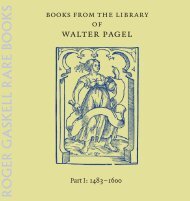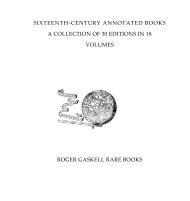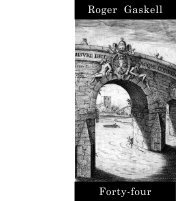pdf - Roger Gaskell Rare Books
pdf - Roger Gaskell Rare Books
pdf - Roger Gaskell Rare Books
Create successful ePaper yourself
Turn your PDF publications into a flip-book with our unique Google optimized e-Paper software.
experiments: with certain excellent works of B. G. à Portu Aquitano.<br />
Also Isaac Hollandus his Secrets concerning his vegetall and animall<br />
work. With Quercetanus his Spagyrick antidotary for gunshot.<br />
London: printed by G. Dawson, and are to be sold by William Nealand, at<br />
his shop at the sign of the Crown in Duck-lane, 1652.<br />
4to: pA4 A–2A4 2B4 bb2 , 2C–3N4 3O4 , pp. [8] 16 [2] 180 (with several<br />
internal errors of pagination); [2] 106; [10] 92 (i.e. 72, 69–88 omitted);<br />
[12] 75 [1] (last page blank). Fleuron border to title, woodcut<br />
headpieces and initials; subsidiary titlepages dated 1652 on 2B4, 2Q2<br />
and 3C3 repeating the wording of the general title.<br />
172 x 128mm. A small copy with several headlines and catchwords<br />
shaved; title browned and dust soiled and Xeuron border cropped;<br />
waterstained with some weakening of the paper.<br />
Binding: Contemporary blind ruled calf, rebacked, new endleaves.<br />
Corners worn.<br />
Provenance: Contemporary inscription on titlepage, partially erased,<br />
‘William [?] his book’ and another early signature ‘Farringdel’; a few<br />
words of contemporary annotation on Z1; inscription on rear endleaf<br />
about one Jacob who ‘commited one fault and a Material one’ on June<br />
19, 1709 (I can’t decipher what the misdemeanour was); Liverpool<br />
Medical Institution with library labels on endleaves and small stamp<br />
on titlepage and several other pages.<br />
First edition of this compendium, assembled by William Johnson<br />
chieXy from translations by John Hester, Wrst printed in 1582, of<br />
Del compendio de i secreti rationali (1564) and La cirurgia (1580). The<br />
Thomason copy is annotated 1 October 1652: ESTC gives the date<br />
as ‘1652 [i. e. 1651]’, it is not clear on what basis. Wing F953; ESTC<br />
R211011; Wellcome III, p. 27; Krivatsy 4079; SudhoV 370; Norman<br />
Library 797; Neville I, p. 456.<br />
Fioravanti’s works were enormously popular and were regularly reprinted<br />
in Italian, and English editions of several of his works had appeared around<br />
1580 in translations by John Hester. These are important for introducing<br />
Paracelsian chemical remedies to England – though not, Debus points out,<br />
Paracelsian philosophy since Hester chose to translate only texts with recipes,<br />
avoiding more theoretical works (Debus pp. 68–9).<br />
Aside from the interest of bringing Fioravanti’s writings back into print 100<br />
years after they were written, this edition provides a fascinating commentary<br />
on the row between the College of Physicans and Nicholas Culpeper.<br />
‘OYcially, the College’s response to [Culpeper’s translation of their<br />
pharmacopoeia] was one of digniWed silence. unoYcially, dissecting knives<br />
were drawn. William Johnson, the College’s chemist, wrote a vitriolic personal<br />
attack added to the Wrst publication that came to hand, a translation of an<br />
obscure medical work by the Italian physician Leonardo Fioravanti entitled<br />
Three Exact Pieces. Giving Nicholas a taste of his own medicine, Johnson<br />
accused him of being ignorant, arrogant, and even licentious... Johnson’s<br />
attack was not openly endorsed by the College, but it was signed “From<br />
Amen Corner”.’ (Woolley pp. 295–6.)







